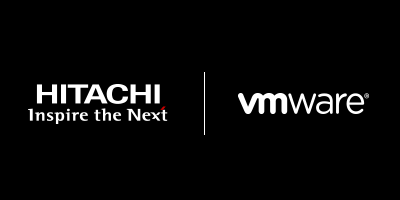Accelerating IT to the Speed of Business


Businesses today adapt to change with breathtaking speed. Lines of business now follow their products out the door digitally and continue tracking usage throughout the lifecycle. This gives companies valuable insights into how customers use and interact with their products, enabling them to analyze and evolve solutions while nurturing customer relationships. However, this puts significant pressure on IT organizations to develop applications that support this process and can evolve with ever-shifting requirements.

IT leaders are at a critical juncture. They must innovate faster to keep pace with business needs. But at the same time, need a way to address the explosive growth in the number and variety of applications required to support business goals.
What’s needed is a way to effectively support the complexity of legacy applications and environments while remaining agile enough to create new applications with distributed architectures that can run at the edge, the core, and in the cloud. Doing this—and managing these two distinctly different species of applications simultaneously—is no easy feat.
New applications often need to be written fast—seemingly overnight. Unlike in the past with monolithic applications, the new breed of cloud-native applications are assembled from microservices, snapped together with reusable, transportable, and scalable building blocks. But we can’t run our businesses on these new apps alone. We need both traditional and cloud-native applications. Therefore, these new applications need to complement our highly functional legacy application environments.
Unless the organization was born in the cloud, the best approach forward is to retain the VMware resources. For example, using Tanzu and other technologies allows you to do that and run your applications anywhere.
Cloud-native can provide the speed of change desired. Unlike a legacy application that might receive a new code load once or twice a year, a cloud-native application can change 10 times a week. Cloud-native apps are assembled, run, and modified simultaneously and constantly. Flexibility is essential, and application services like Tanzu provide that flexibility to shift to whatever “cloud” best serves the application and your business.
For global companies with multiple locations, the question of connectivity to the public cloud can be challenging. There’s no magic box. A lot of connectivity with support for many different cloud providers will be needed to be able to pick and choose the right services to support the environment.
Near-cloud resources such as Equinix that can host the hardware and provide the APIs and network connectivity to the public cloud have an essential role to play before migrating parts of the environment to the cloud. It’s important to remember that the public cloud is not the destination. The objective is to achieve a cloud operating model for the future data center capable of supporting one or multiple public cloud services.
With functional units within the business demanding faster application innovation, CIOs must be prepared to respond, whether automating an internal process or building an application that can follow a product out the door. DevSecOps is fundamental for making that happen. VMware’s approach to an efficient, smart, and nimble cloud stack gives IT the ability to handle service calls and address network requirements in one solution—essential capabilities for your data center. This makes it possible to spin up services more or less on demand. This is important since we expect more IT shops to focus on developing applications to help lines of business stay competitive. When applications run in the core, at the edge, and in the cloud, their risk exposure increases; as a result, security must be built into the applications themselves.
The bare metal platforms we relied on for decades are many things, but portable is not one of them. Virtual machines may have let us move legacy applications from public to private cloud, but they’re rigid constructs compared to containers.
With cloud-native applications, microservices containers allow us to assemble applications quickly and reuse them at will for future novel applications. These containers frequently use a fraction of the CPU resources of a comparable virtual machine. A cloud-native application might leverage 100 reusable microservice containers to deliver services, replacing the need to write 10,000 lines of immovable code. This makes them lightweight and mobile, and allows you to move and repurpose them as needed at the edge, in the cloud, and with different cloud services.
Creating a cloud stack that provides the consolidation, optimization, and automation needed is as much about the total cost of ownership (TCO), as it is about technology. With a cloud platform, we have the opportunity to break down infrastructure teams in the data center by automating internal processes and adding agility. The goal should be to avoid complexity and simplify your cloud operating model when adding public cloud.
Previously VMware virtualized infrastructure with virtual machines. In taking the next step, VMware is now effectively virtualizing your entire OS with container services. A management interface that supports thousands of different cloud providers means that any container you create can be shifted to any cloud provider, removing complexity.
Hitachi leverages that VMware technology so that you can drive your entire multicloud storage environment directly from the VMware virtualization engine. With complete transparency between your different hardware layers, you can operate firmware, manage hardware, and spin up new services with whatever SLA is required.
This transparency and abstraction provide a single pane of glass for your private cloud environment that supports your legacy applications and new, modern, service-based workloads. You have one cloud management interface to move you into the public cloud and back again. Strategically combining and integrating cloud-native and legacy environments with Tanzu creates a dynamic environment optimized to support a rapidly changing business.
Be sure to check out Insights for perspectives on the data-driven world.
Tom Christensen is Global Technology Advisor and Executive Analyst at Hitachi Vantara.

Tom has +30 years' experience in data center modernization, from compute and data infrastructure to hybrid and multicloud, applications, DataOps and big data analytics. He writes extensively about technology and advocates for sustainability and social innovation.